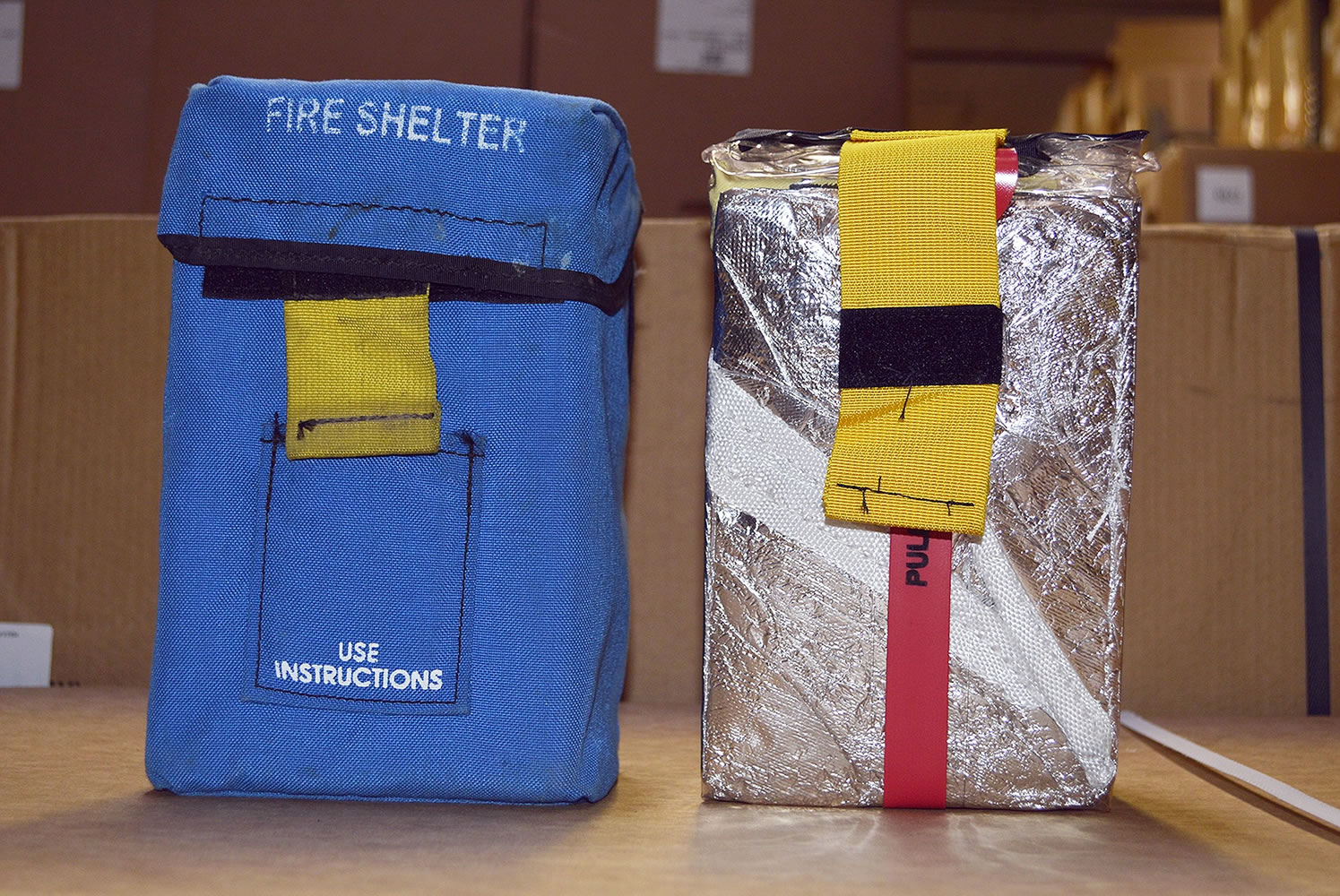BOISE, Idaho — The man tapped by the U.S. Forest Service to come up with a better fire shelter once had to get inside one on the side of a burning mountain and listen to flames roar past, sounding like a jet airplane taking off.
“Everybody trains with it, but nobody ever thinks that you’ll ever need to use it,” said Tony Petrilli, recalling the smoke and embers from that day.
At the time, Petrilli was a smokejumper based in Missoula, Mont., working in Colorado. He deployed the fire shelter with eight other smokejumpers on Storm King Mountain in 1994. But 14 firefighters on another part of the mountain died trying to escape the flames.
The federal agency worked to improve equipment and strategy after the deaths on Storm King Mountain. It’s doing the same now following the deaths of 19 firefighters in Arizona in the 2013 Yarnell Hill Fire, where officials said flames and heat went beyond the current fire shelter’s protective capabilities.
Petrilli is the fire shelter project leader for the Forest Service at the Missoula Technology and Development Center hoping to make improvements to the protective gear.
“We were pretty certain we were over these kinds of tragedies,” said Tom Harbour, national director of Fire and Aviation Management. “But to have Yarnell Hill 19 years after Storm King, it again was a place and time where we’ve got to ask ourselves what we can do to survive and succeed in these complex and changing environments.”
Fire shelters are one part of that plan, but a key one as all firefighters are required to carry them. The service had planned to start on the project this year, but moved it up a year in an effort to have a new fire shelter available by 2016. The agency is currently testing materials for a new shelter.
It’s a balancing act, Petrilli said, trying to find the right combination of weight that won’t add too much to a firefighter’s pack but that can also withstand temperatures well past 1,000 degrees for short periods.
The current shelter, last updated in 2002, weighs 4.5 pounds in its smaller size and 5.2 pounds for larger firefighters. Each shelter costs about $260.
“It would be super easy to make a 40-pound shelter that would perform much better,” said Petrilli, adding that it isn’t realistic to expect a firefighter to add that onto a pack that can already weigh 40 pounds.
There are various options for a new shelter, he said. One involves having a lighter shelter and seeing if it can match the current one in protective capabilities. Another is having the same weight shelter but increasing protective capabilities. A third option is a heavier shelter with greater protective capabilities.
“The way to improve performance is to slow the heat transfer of the shelter,” Petrilli said. “Slowing heat transfer requires insulation in one form or another.”
He said 11 entities have sent in materials that the Forest Service believes offer potential possibilities.
“That silver bullet that is going to be a 1-pound thing and is going to protect you in every situation, nothing like that has shown as yet,” he said.
That gets back to Harbour’s strategy of improving the chances that firefighters will make good decisions in the field to avoid entrapments. That also involves, he said, a larger scale strategy of having fire managers think long about how they deploy firefighters.
“We can’t send them in to do the impossible,” Harbour said. “They do the nearly impossible nearly every day.”



